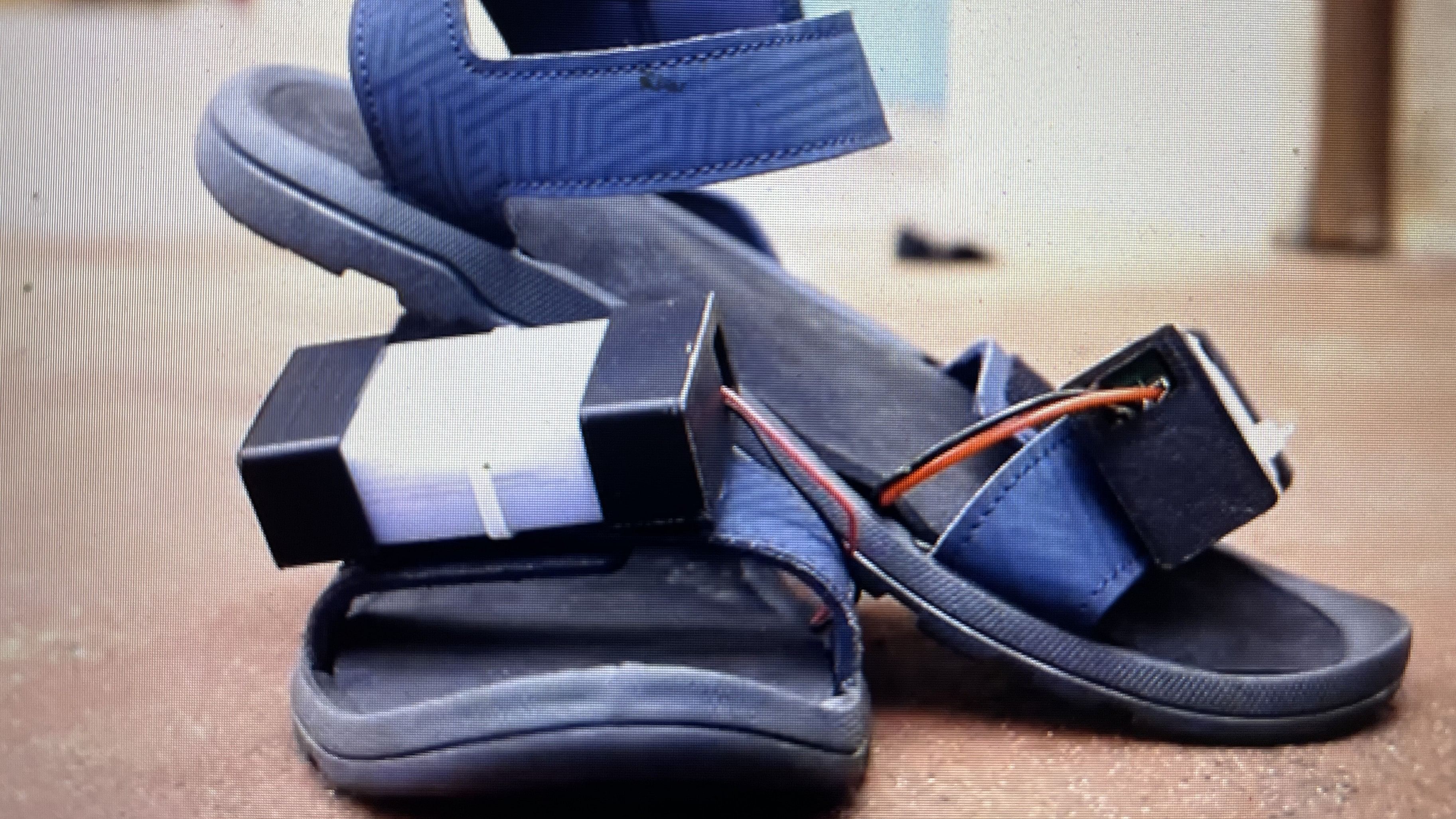
Credit: Special Arrangement
Many innovative ideas to handle the energy crisis hit the market at frequent intervals. Bengaluru boy Samkit Golcha, a grade 12 student, has come up with a chargeable insole, which could be a potential revolutionary idea in the footwear industry.
This idea is a result of Samkit’s passion for physics and chemistry, and a desire to solve energy crisis. “The energy crisis became clear to me during the pandemic and lockdowns, when we could see several people around us, struggling to access electricity. It is then that I started researching and came across the interesting concept of piezo electricity (see box),” explains the student of TISB School.
The insole incorporates piezoelectric cells, which harness the energy generated during walking, and store it in a battery attached to the shoe for later use. This technology will not only reduce reliance on traditional charging methods but also promotes eco-consciousness by utilising the energy one naturally produces, during our daily activities.
By integrating the principles of applied physics and engineering, Samkit has developed the product, which aims to promote functionality and sustainability. “The design was conceptualised around shoe designs that are already available in the market. More than focusing on the look and design of a shoe, I want to focus on getting the technical parts of the insole right,” he adds.
Aiming to make our lives more energy efficient, Samkit hopes the insole will help provide electricity to people in rural areas, who suffer from power cuts and unreliable access to power. “I had once visited a town in Mysuru, which only received electricity for about eight hours in a day. I am hoping that the shoe can help power up a small lamp,” he says.
As any other product, the shoe is going through different iterations. “Prototype 1 was a proof of concept and prototype 2 was about trying to maximise efficiency of the shoe. Currently, I am working on prototype 3, where I am looking at the durability of the shoe, as I haven’t tested it for long yet,” says Samkit. He tested his second prototype with 10 individuals from Ekal Arogya, a non-profit organisation, and gathered feedback from the same, which he is including in his third prototype.
What ahead?
Samkit’s primary goal is to focus on generating electricity through the insole. “My secondary goal is to make sure there is awareness about the product, and I would like to add technical aspects to the shoe, such as a microprocessor,” he adds.
For production, Samkit has approached printed circuit boards manufacturers and is affiliated with one currently. “Currently, I produce the insoles inhouse as I need to ensure they are of good quality. In the future, I plan to look at a mechanised process,” he adds. Samkit hopes that Eco Steps will become a commercial idea in the future, as he “sees potential and market” for the same.
Pricing
The cost of the insole will be between Rs 700 and Rs 800. “I hope to collaborate with an NGO to spread this idea and help people in rural areas,” he adds.
What is piezoelectricity?
Piezoelectricity is an electric charge, which accumulates in materials like certain ceramics, crystals, and even matter like DNA, bone, etc. It is a phenomenon, where there is a pairing between the electrical and the mechanical state of the material used.